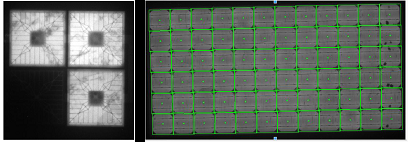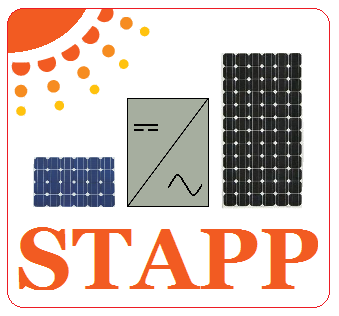Electroluminescence measurements of PV devices and modules
|
Quality assessment of photovoltaic devices requires advanced measurements that allow a non-destructive assessment of modules to assess the impact of different environmental stresses. Electroluminescence (EL) measurements offer a fast and easy way of quickly pinpointing defects within solar cells, and modules. In its most basic form, it can be used to identify micro cracks and dead spots, whilst in its most advanced form, can be used to identify local electron lifetimes, distinguish between resistive losses and recombination/optical losses, and identify the energy of light which is being emitted (spectral
EL). EL measurements are taken by reversing the solar cell operation. Under normal operation, a solar cell absorbs photons, creating free electrons for power generation; however during an EL measurement, electrons are pumped into the solar cell, which recombine and emit photons of a characteristic wavelength (similar to the operation of an LED).
Appu Paduthol joined the APV group at CREST, Loughborough University from May till July 2012. During his time here, he worked on 2 spatial EL imaging systems. In one case,
a peltier cooled CCD camera was used to take EL images, and in the other, a modified DSLR camera with an IR lens was used. His work at CREST helped add an extra dimension to the characterisation capabilities at CREST, which aided not only the UK-India STAPP project, but also other European funded projects as well as day to day characterisation of solar cells. The following tasks were completed:
|

|
Improved optics needed for small area CCD camera, to improve focus of EL images. |
|

|
Developed a Labview interface to link with USB connected cameras, and take images |
Developed a Labview interface to link with USB connected cameras, and take images:

Figure 1: (Left) EL image of 4 cells in series, with one inactive cell. (Right) Output of Labview code detecting individual cells on a full module.
|

